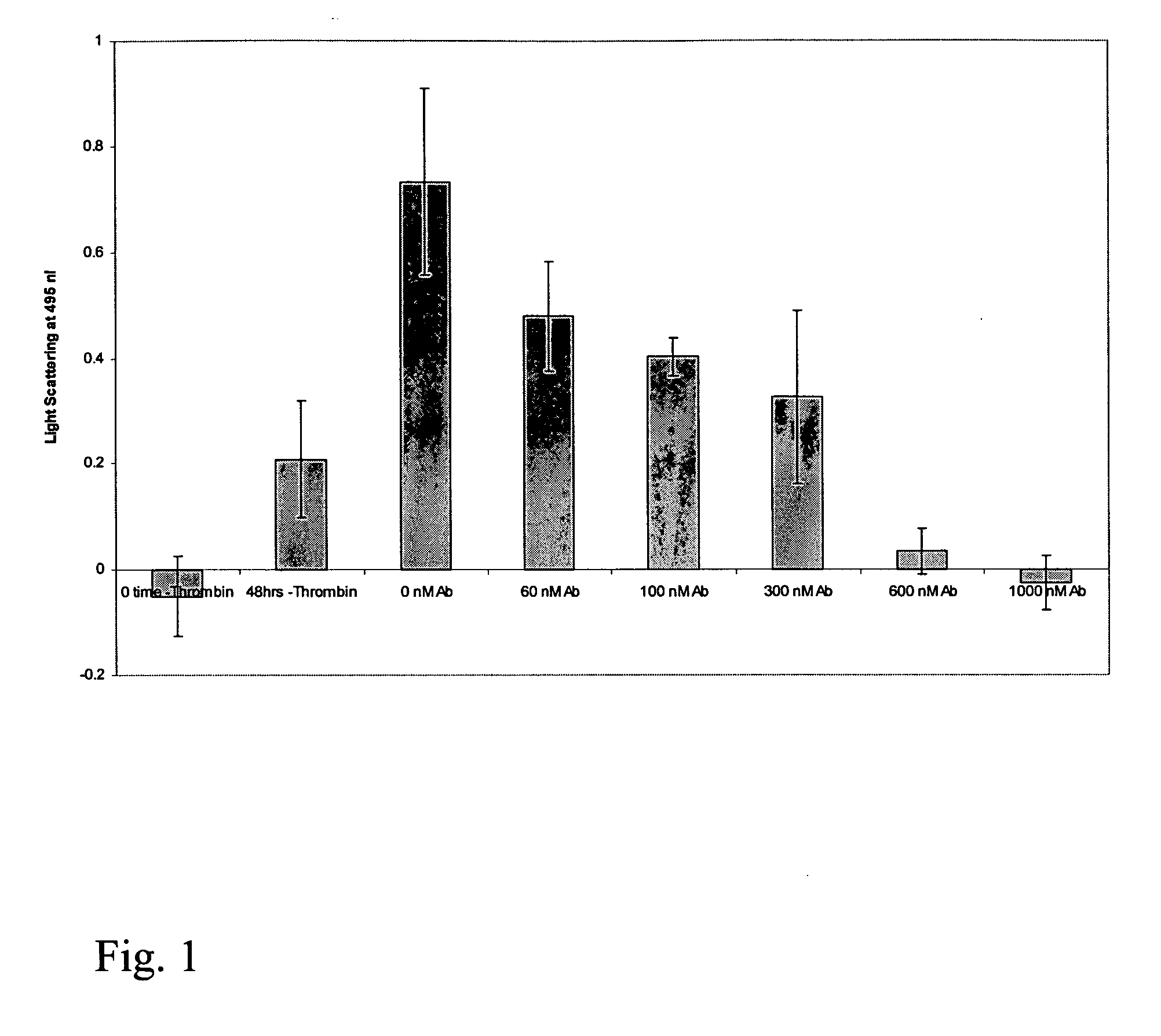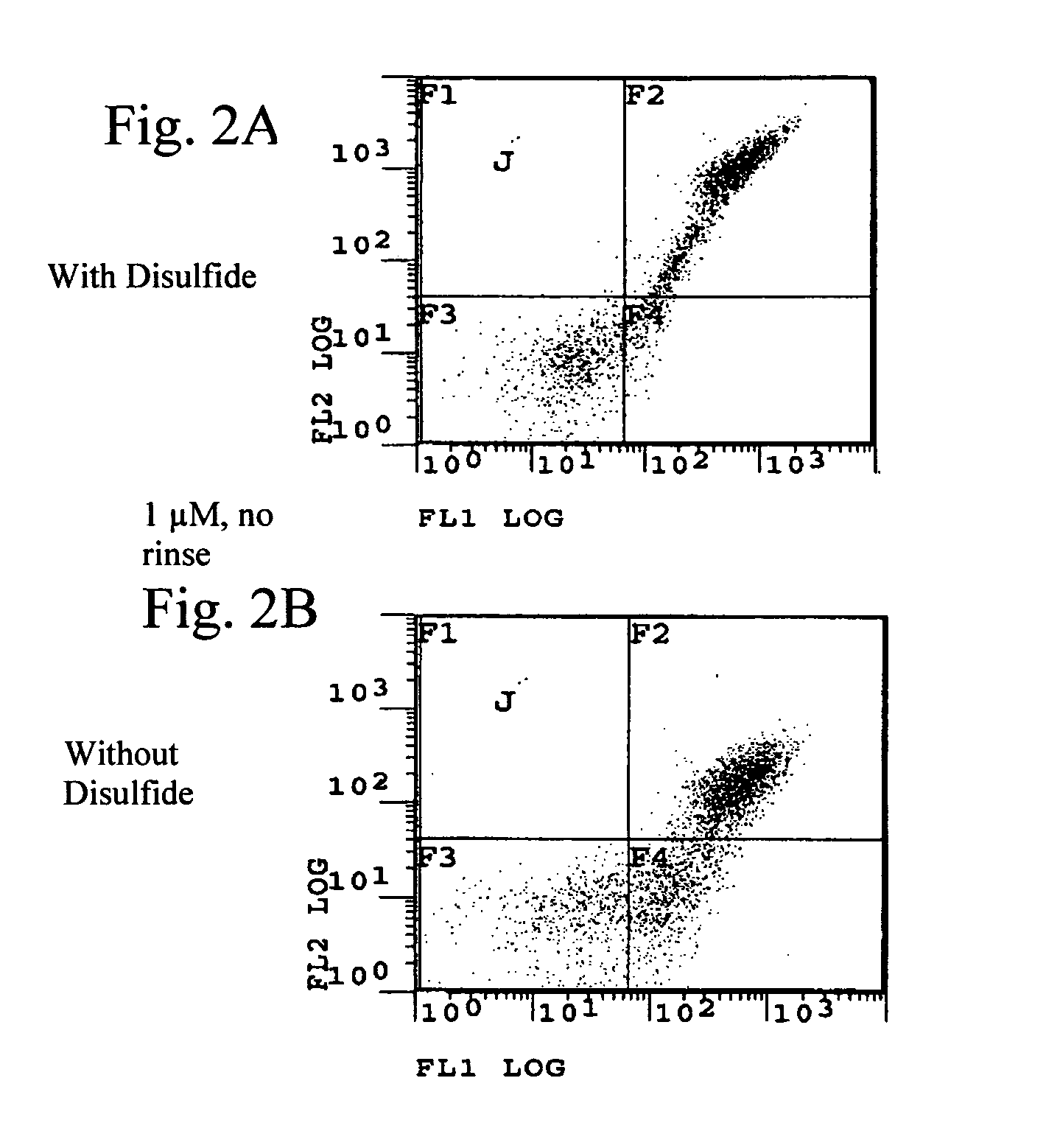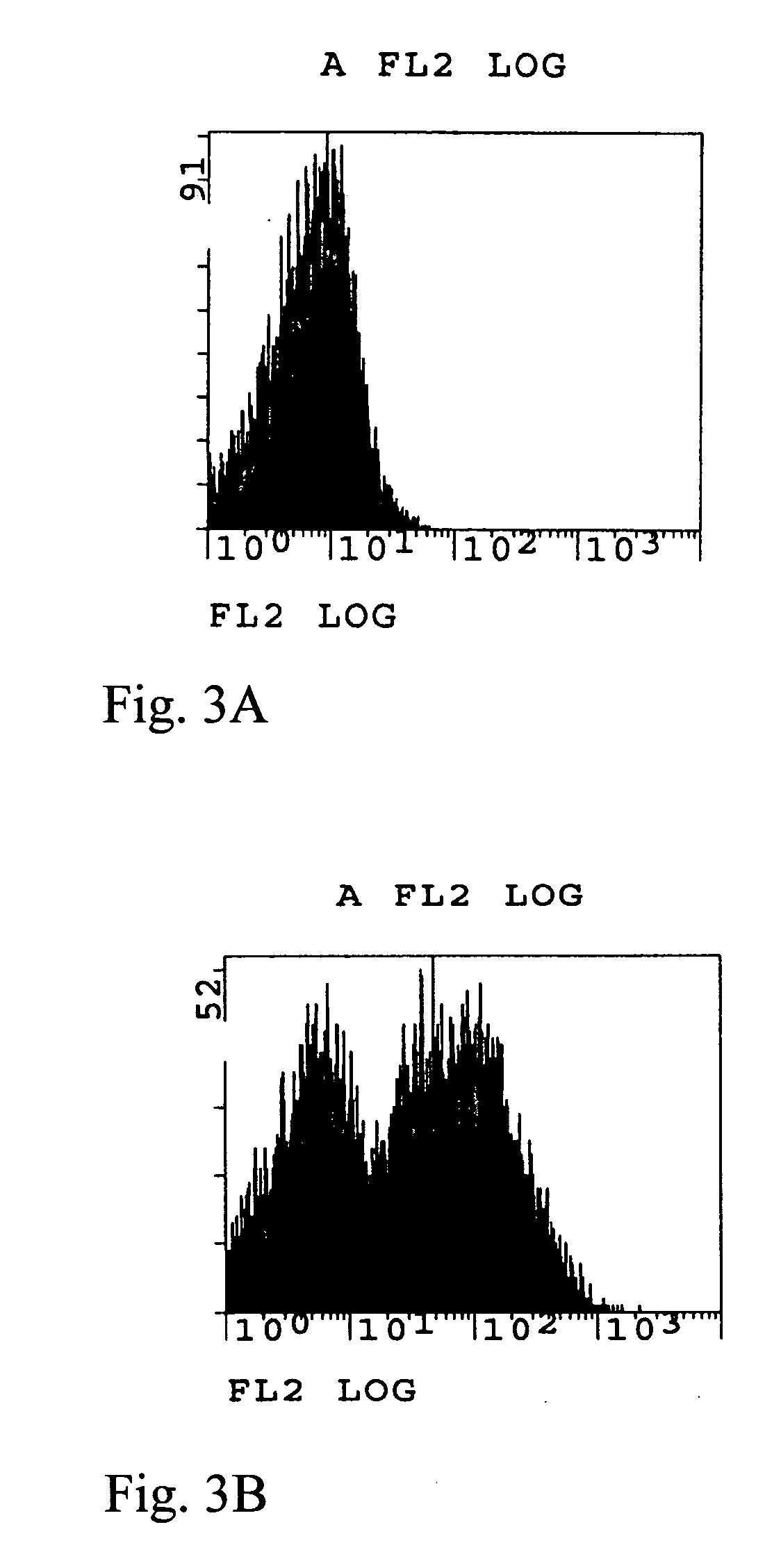Single-domain antibodies and uses thereof
- Summary
- Abstract
- Description
- Claims
- Application Information
AI Technical Summary
Benefits of technology
Problems solved by technology
Method used
Image
Examples
example 1
Engineered Single Domain Antibody that Inhibits Huntingtin Aggregation
Introduction
[0188] We have engineered a single-domain antibody (also referred to herein as an intrabody) for intracellular expression and binding under the reducing conditions of the cell cytoplasm. The antibody is a variable light chain of human origin, the disulfide bond has been removed and the affinity has been engineered to 10 nM. The antibody inhibits huntingtin aggregation both in a cell-free in vitro assay and in a yeast intracellular assay.
Methods
Single-Domain Antibody Inhibits Aggregation in Cell-Free Assay
[0189] To determine if a single-domain antibody (SDAb) [also referred to herein as a single-domain intrabody (SAIb)] binding the N-terminus of huntingtin could inhibit Htt aggregation, the SDAb was secreted from yeast as a His6 fusion and purified. Approximately 1 mg was obtained of the purified protein.
[0190] In this series of experiments, the effect of the engineered antibody on huntingtin ...
example 2
Yeast Surface Display (YSD)
Introduction
[0200] We provide protocols we used to engineer single chain antibodies by yeast surface display (YSD), which is a powerful tool for engineering the affinity, specificity, and stability of antibodies, as well as other proteins. Since first described six years ago by Boder and Wittrup (Boder, E. T. et al., (1997) Nat Biotechnol 15, 553-557), YSD has been employed successfully in engineering a number of antibodies (Kieke, M. C. et al., (1997) Protein Eng 10, 1303-1310; Boder, E. T. et al., (2000) Proc Natl Acad Sci USA 97, 10701-10705), as well as T-cell receptors (Holler, P. D. et al., (2000) Proc Natl Acad Sci U S A 97, 5387-5392; Kieke, M. C. et al., (1999) Proc Natl Acad Sci U S A 96, 5651-5656; Kieke, M. C. et al., (2001) J Mol Biol 307, 1305-1315). A recently reported large non-immune single chain antibody library is a good starting point for engineering high affinity antibodies (Feldhaus, M. J. et al., (2003) Nat Biotechnol 21, 163-170...
example 3
Background
[0235] Various anti-huntingtin antibodies are available include anti-huntingtin mAb 1C2, which decreases aggregation by 80% in filter assay (Heiser, V. et al., Proc Natl Acad Sci USA Jun. 6, 2000;97(12):6739-44); an anti-huntingtin scFv intrabody that reduced number of aggregates in cell model of HD (Messer, 2001); and an anti-polyproline scFv intrabody that reduced htt toxicity (Ko, J., et al., Brain Res Bull. Oct.-Nov. 1, 2001;56(3-4):319-29).
[0236] Drawbacks exist in the available antibodies and improvements we have made include: improved aggregation / toxicity inhibition properties; improved intracellular delivery of Abs with PTD's, and an improved ability to use the antibodies we produced to direct sub-cellular localization of Htt.
[0237] Antibody V gene cDNA from human peripheral blood lymphocytes, spleen, tonsil tissue was purchased commercially. The light and heavy chains isolated separately by PCR and ligated randomly to make scFv. ...
PUM
| Property | Measurement | Unit |
|---|---|---|
| Molar density | aaaaa | aaaaa |
| Molar density | aaaaa | aaaaa |
| Molar density | aaaaa | aaaaa |
Abstract
Description
Claims
Application Information
 Login to View More
Login to View More - R&D
- Intellectual Property
- Life Sciences
- Materials
- Tech Scout
- Unparalleled Data Quality
- Higher Quality Content
- 60% Fewer Hallucinations
Browse by: Latest US Patents, China's latest patents, Technical Efficacy Thesaurus, Application Domain, Technology Topic, Popular Technical Reports.
© 2025 PatSnap. All rights reserved.Legal|Privacy policy|Modern Slavery Act Transparency Statement|Sitemap|About US| Contact US: help@patsnap.com



